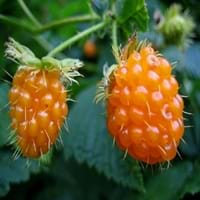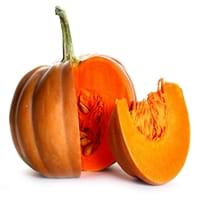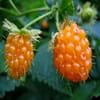Health Benefits
Cancer prevention, Improves stomach health, Weight loss properties
Arthritis treatment, Cancer prevention, High Cholesterol Regulation, Lower blood pressure, Helps Prevent cataract, Prevents gall stones, Ulcer treatment, Weight loss properties
General Benefits
Anti oxidant properties, Digestive aid, Eye care, Healing of wounds, Improves eye vision, Maintains healthy cholesterol level, Strengthens bones
Boosts respiratory health, Eliminate parasites and infections, Protects against birth defects, Strengthens bones
Skin Benefits
Anti-aging benefits, Reduces wrinkles
Heals sunburn, Hydrates skin, Skin rejuvenation
Hair Benefits
Protects hair, Regulates hair growth
Regulates hair growth
Allergy Symptoms
Abdominal pains, Itching, Swelling of mouth, tongue or lips
Abdominal cramps, Anaphylaxis, Digestive Problems, Dizziness, Eczema, Fainting, Hives, Inflammation, Itching, Tingling sensation in wrist and face, Vomiting, Wheezing
Side Effects
Allergic reaction
Kidney and gallbladder diseases
Best Time to Eat
Best if taken as a breakfast (or empty stomach), As a snack in the late afternoon, Don't eat after meal, Morning time (before lunch)
Along with meal, Don't eat after meal, Morning time (before lunch)
Vitamin B5 (Pantothenic Acid)
Vitamin C (Ascorbic Acid)
Vitamin K (Phyllochinone)
Lutein+Zeaxanthin
Not Available
Phytosterol
Not Available
Calories in Fresh Fruit with Peel
Calories in Fresh Fruit without Peel
Not Available
Calories in Frozen Form
Not Available
Not Available
Calories in Dried Form
Not Available
Not Available
Calories in Canned Form
Not Available
Season
All seasons
All seasons
Varieties
Golden ruby and Olympic Double
Jarrahdale, Peanut, Lakota, Cow, Sugar, Caribean, Red kuri, Buttercup and Pink lady
Color
Pink, Pink red, Salmon, Salmon yellow
Blue, Green, Orange, Red, White
Inside Color
Pink
Creamy Yellow
Taste
Sweet
Creamy, Soft, Sweet
Origin
North America
Mexico
Soil Type
Loam
Clay loam, Sandy loam, Well-drained
Climatic Conditions
Moist
Warm to hot climate
Facts about
- The name salmon berry is due of the resemblance with 'salmon roe'.
- In 1 kg of fruit, there are total 315,250 seeds.
- Salmon berry tree leaves act as an excellent replacement for tea.
- The name pumpkin has its roots in the Greek word ‘pepon’, meaning ‘large melon’.
- The largest pumpkin ever grown weighed 1,140 pounds.
- Pumpkins were once known for removing freckles & curing snake bites.
Spirits
Not Available
Yes
Cocktails
Not Available
Yes
Top Producer
United States of America
China
Other Countries
Canada, Mexico
Egypt, India, Indonesia, Iran, Italy, Mexico, Russia, Spain, United States of America
Top Importer
Not Available
United States of America
Top Exporter
Not Available
China
Botanical Name
Rubus spectabilis
Cucurbita maxima
Synonym
Not Available
Cucurbita pepo, Squash
Subkingdom
Tracheobionta
Tracheobionta
Division
Magnoliophyta
Magnoliophyta
Class
Magnoliopsida
Magnoliopsida
Subclass
Rosidae
Dillenhidae
Order
Rosales
Cucurbitales
Family
Rosaceae
Cucurbitaceae
Species
R. spectabilis
Cucurbita mixta
Generic Group
Not Available
Not Available
Difference Between Salmonberry and Pumpkin
We might think that Salmonberry and Pumpkin are similar with respect to nutritional value and health benefits. But the nutrient content of both fruits is different. Salmonberry and Pumpkin Facts such as their taste, shape, color, and size are also distinct. The difference between Salmonberry and Pumpkin is explained here.
The amount of calories in 100 gm of fresh Salmonberry and Pumpkin with peel is 47.00 kcal and 26.00 kcal and the amount of calories without peel is Not Available and 30.00 kcal respectively. Thus, Salmonberry and Pumpkin belong to and category.These fruits might or might not differ with respect to their scientific classification. The order of Salmonberry and Pumpkin is Rosales and Cucurbitales respectively. Salmonberry belongs to Rosaceae family and Pumpkin belongs to Cucurbitaceae family. Salmonberry belongs to Rubus genus of R. spectabilis species and Pumpkin belongs to Cucurbita genus of Cucurbita mixta species. Beings plants, both fruits belong to Plantae Kingdom.









